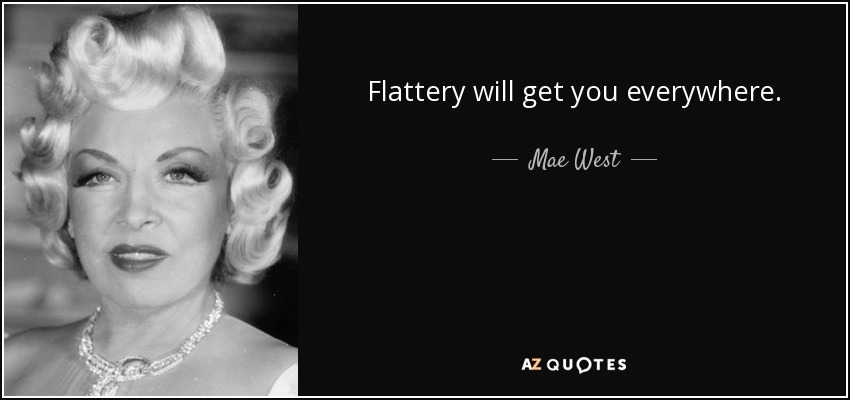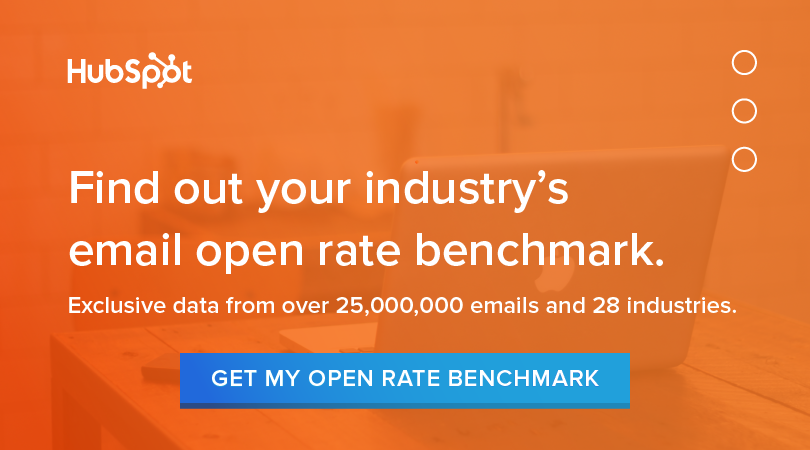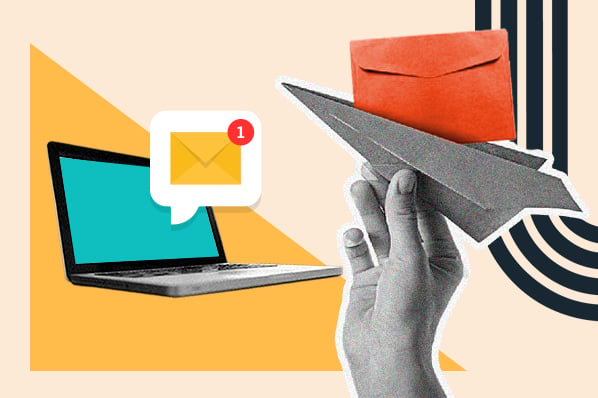
"Flattery will get you everywhere." - Mae West
Salespeople are usually too eager to talk about themselves. They are eager to give presentations all about their company and product. They are eager to talk about features and benefits on their first phone calls. They are way too eager to pitch their products over email.

Unfortunately, every time a salesperson does this, a kitten dies and Mae West rolls over in her grave. Not just not her sultry eyes rolling, but her whole body in disgust because you thought pitching might be fetching.
Really, though. Double entendres, idioms, analogies, and sexy starlets aside, talking about yourself -- unless what you’re saying directly addresses a prospect's challenges -- is usually a waste of breath and everyone's time. Prospects have the internet if they want information. They need salespeople to consult and guide them as they navigate their unique challenges, goals, and situation.
So, when a salesperson sends their first email it shouldn't be about them or their company. It should demonstrate that they took an interest in the prospect's business before offering to help. And one of the best ways to do this? Flatter the prospect -- genuinely and honestly.
I recently had the opportunity to help a sales team transform their old prospecting templates into ones Mae West would be proud of. As part of my duties as an advisory board member for Grapevine, an influencer marketing platform, I'm helping the sales team improve their sales processes. As users of HubSpot's sales software, we could see they were getting a high open rate with their current templates, but response rates were not where they should be. So, we collaborated on a few new email templates they could test.
In a short amount of time, we've increased their response rates considerably. I've included three of the templates below and a sample response that we've received from each one.
But before I dig into the new email templates, let’s start with the old one. While the sales reps were using many different templates before we rolled out new alternatives, most looked something like this:
Hi [Prospect],
I think there is an opportunity for us to help you run some amazing campaigns that can increase sales, generate buzz, and enhance brand awareness through our network's YouTube videos.
Our platform has completely revolutionized the way beauty, fashion, and lifestyle brands partner with YouTube Influencers by providing easy access to thousands of creators, by facilitating end-to-end conversations from campaign inception to completion, and by providing real time analytics across many more performance metrics than any other platform. Would love to tell you more about the ROI we are currently getting for our brand partners. You can also check out our media deck.
If interested, I find it’s best to learn more about your needs over a quick call -- so let me know your upcoming availability.
Looking forward to connecting :)
Best,
[Rep]

This template and others like it were actually performing fairly well -- garnering around 80% open rates and 30% click rates. But, although I don't have any evidence of this, I'd credit the open and clickthrough rate success to two factors:
- Influencer marketing is booming.
- The team does a great job of identifying the right prospects during their research efforts.
However, the major issue with this template is that it is all about them. While the information is all true (the platform is awesome and it does drive real results for brands), prospects weren't replying at a high rate.
The team observed that response rates rose when they customized the templates by referencing something the prospect was doing. So, it wasn't difficult to convince the reps to start doing more research for each prospect, as well as test some new approaches that talked more about their prospect and less about Grapevine.
Lead by one of Grapevine's top performers, we brainstormed a few new ways to reach out. The three revamped email templates below are getting much higher response rates -- not to mention much more enthusiastic replies.
Email Template #1: “Love your videos”
Grapevine reps are always asking their friends and contacts which products they use and why, because this helps them identify opportunities to pursue. Whenever they can, they also sign up for anything the brand offers like a beta notification about a new service, or a blog, newsletter, YouTube or Instagram feed.
This prospecting email template makes it clear how much research the rep has done:
Hi [Prospect],
A friend of mine just introduced me to [Brand]. He had such high praise that I immediately signed up for your [product] beta launch notification.
He also told me that I'd be impressed with your influencer marketing. He was right! Looks like you're getting some great traction with the [hashtag] Instagram posts and I really loved this YouTube video: [link]. Great choice to work with [YouTube creator] as they always seem to drive great results.
Are you seeing a measurably higher customer acquisition rate from these [hashtag] posts and YouTube videos compared to other marketing efforts?
Best,
[Rep]

Here's a response this email garnered:
Sorry. Somehow I missed this email. That's awesome that your friend recommended you and even better to hear that you're considering [product]. We would love to have you. I could actually give you a discount as well if you'd like :-)
Influencer marketing has been great for us. As a startup it's probably the most efficient way to help organically grow your base. That being said, it's a mixed bag when it comes to ROI based on conversions. Some bloggers/YouTubers etc. are awesome from a brand awareness standpoint but aren't as effective in conversions. We've had some big wins and others that are just okay. All in all, it works out, but it's sometimes tough to predict results. As as startup with limited resources, the hit or miss nature prevents us from doing a lot more of it.

Part of Grapevine's value proposition is that brands can track conversion by creator and campaign. The Grapevine team can also use historical conversion data to help brands pick creators for future campaigns. So, this is clearly a great opening for a follow up call or email where the Grapevine rep can ask, "Would you like to find more creators who have proven they can drive conversions for brands like yours?"
In this way, this email template kickstarted a valuable conversation that will likely lead to a sale.
Email Template #2: “Featuring you”
Here's another template we've been testing:
Hi [Prospect],
I've been really impressed with your influencer marketing on Instagram and YouTube. I shared your YouTube video with my friends on Facebook and reposted a photo from [creator] on Grapevine's Instagram page as an example of great influencer marketing. I felt she really brought your brand aesthetic into her amazing photo. You can see yours and other great examples of influencer marketing at #GrapeFinds: https://www.instagram.com/explore/tags/grapefinds/
I can see you're getting great buzz based on the number of likes. Are you happy with the increased engagement you're getting compared to the spend?
Best,
[Rep]

This template requires about two minutes of effort from the salesperson. You can see how much the compliment resonated in the response below.
Hi [Rep],
Thanks for your interest in [Company]. I’m glad to see that our YouTube videos and instagram work is having a good impact! I did some research on Grapevine and would be interested to learn more about the platform. We are currently using a YouTube influencer service that I am not super happy with, so I would love to learn more about Grapevine. Can you please send through some information, case studies, minimum spend info, etc?

It's nice when prospects say they're unhappy with a competitor and then ask buying questions in their first response. Jealous? Keep reading.
Email Template #3: “A huge fan”
Here's a third template we're testing:
Hi [Prospect Name],
I was speaking with [creator] the other day and she said that she's basically lived in your [product] all winter. She's a huge fan of [Brand] She specifically loves X about [product].
I'm also a huge social media nerd and love your Instagram page. It looks like there are a number of influencers with strong followings who are sharing your products.
With this kind of success, campaign coordination via email and social channels usually becomes frustrating and time-consuming. Sometimes, it becomes almost impossible to track who you are working with, let alone the results from each campaign. How are you keeping yourself organized?
Best,
[Rep]

Once again, here's a real response from one of the prospects who received a customized version of this template:
It’s such a pleasure to connect. Love that you’re hearing such great things about [Brand] and glad [product] was a hit. I’m still wearing it myself.
I love the idea of Grapevine and would love to schedule time to chat about the platform. Sounds so amazing!

In this case, the challenge of manually managing so many influencers hit a nerve with this prospect. After realizing her company had the challenge mentioned in the email, the prospect did some quick research and realized Grapevine might be able to help.
Follow-up Email Template
We also devised a follow up email template to send if one of these three first emails didn't elicit a response. The rep forwards the original note along with the below when they follow up.
Hi [Prospect],
Not sure if you saw my note below? Reason I'm asking whether the campaign has been successful is because I'm always looking for ways to help my clients do better campaigns. Yours looks like a good example.
Would you like to swap notes or ideas re: influencer marketing? I have 100s of examples that I can share too.
Best,
[Rep]
-------------------
[original message]

This message accomplishes a few things. First, it puts the original message at the top of the inbox in case the prospect missed it or forgot to respond. Second, it tells them that Grapevine is an advocate for their clients, always trying to share best practices. Third, it sets the tone that the Grapevine rep is an expert resource -- more of a peer sharing best practices than a salesperson pitching a platform.
And just so you believe me that all of these responses are authentic, here's a real response with an objection:
Sorry for the slow response! It's nice to meet you, and thanks for getting in touch. :) Right now, my digital marketing budgets are already committed for the year but I will definitely keep Grapevine in mind should anything open up.
Enjoy the rest of your Thursday! xx

As we all know, any response is better than none.
How and Why to Use Flattery in Sales Emails
How are the new templates performing overall? It's still early. Open rate is a bit lower at 70%, which is likely due to the fact that the reps weren't customizing the subject line until halfway through our test. But the click rate is significantly higher at 50%, although most of the time, the prospect is clicking on a link to their own YouTube video or Instagram post. The key difference between the old templates and these new ones, however, is that they're getting a higher response rate -- 25% to be exact!
Why do these templates get a higher response rate? They spark curiosity in the prospect. Curious about the potential improvement the emails allude to, each of these prospects indicated they went to Grapevine's website to check out the system. Finding it interesting and relevant, they then responded to the salesperson enthusiastically. Because the salesperson provoked the introspection, the buyer believes that the salesperson is a credible expert who can potentially help them overcome the challenge introduced in the original email. And finally, because the note started with a compliment, when the prospect responds, they feel they are talking to a fan who cared enough to learn about them before offering to help. This initiates a very positive relationship which paves the way for a great exploratory conversation.
Do you want to get positive responses like these and response rates in the mid-20% range? Use the instructions below to construct your own flattery-based templates. It is a simple formula. All three templates I shared include only three elements.
Step 1: Give a genuine compliment.
The compliment gets the prospects to drop their guard. As sales legend Tom Hopkins explains, the purpose of a compliment is “to warm them up to you. You’re being friendly and likeable. If they have a certain pride in whatever you’ve commented on, they’ll start to relax in your presence rather than keeping their defense barriers high."
The first step is to find something to compliment. In face-to-face sales meetings, that's pretty easy as you can give a compliment about something in their office or their home. But if you are doing inside sales, you'll have to do research about your prospect beforehand in order to give a genuine compliment.
Grapevine’s reps can easily find a way to compliment their prospects because they can see exactly what brands are doing on social media. Determining whether or not their prospects are doing good influencer marketing is just a social profile visit away. HubSpot enjoys a similar situation, as we can inspect prospects’ websites and find something to compliment them about, or even run a website grader report to find things they're doing well.
But even if you can't inspect the things your service helps prospects improve, you should be able to formulate a compliment through other research. For example, you could read the company’s press releases, what they're posting to social channels, and online reviews, or talk to one of their employees, vendors, or customers. If you're still having trouble coming up with something after investigating these channels, broaden your search. Don't limit yourself to things that are related to your service. I've even complimented people on photos of their dog I’ve found on Facebook. As more and more companies and individuals share things about themselves online, it's becoming increasingly easy to learn about prospects before ever speaking with them.
The second step is to formulate the compliment, which has an important caveat. While it is true that almost everyone loves a compliment, it is critical that the compliment is genuine. Your prospect must believe you are being completely honest and sincere when you are giving the compliment. So, keep your bar high. Don't compliment someone who is not doing a good job. Don’t make something up if you can't find something to praise them about. As Lori Pendleton explains, "Insincere compliments can turn off the customer instantly. After all, who wants to start a relationship with someone whose compliments sound contrived?"
At Grapevine, most of the sales team members are female millennials who just so happen to be the target market for most of their prospects. Sincerely complimenting the health and beauty product companies they're calling on is natural for them. However, if you're worried that your compliment will look insincere because it's wrapped in an email from a salesperson, just send it without a question, or ask and wait for a "thank you" response. You can always probe for challenges later.
The key to prospecting is to get a response and initiate a dialogue. Genuine compliments are an easy key way to get someone's attention.
Step 2: Introduce a challenge your prospect might be facing.
The next step in creating a template like one of the above is to introduce a challenge your prospect might be facing. This can be done as a statement like in template #3 above: "With this kind of influencer marketing success, campaign coordination usually becomes frustrating and time consuming. Sometimes, it becomes almost impossible to track who you are working with, let alone all the results from each campaign."
Choose the pain point based on what you know about your prospect and the typical challenges they face. For example, Grapevine wouldn't introduce this “organizational” challenge to a prospect who has only worked with a few influencers. Nor would they talk about tracking conversions if the brand didn't have an ecommerce storefront. Over time, you should compile a table of challenges and which types of prospects usually struggle with them.
Step 3: Ask a probing question.
After you've introduced the pain point, the final part is easy. Just ask a probing question.
A probing question is one that challenges a prospect to think deeply about a specific topic, and possibly consider something they may not have considered previously. These powerful questions get buyers to stop and think critically about their situation.
In template #3 above, the rep asks, "How are you keeping yourself organized?" which alludes to the challenge of hiring and communicating with multiple creators and tracking multiple campaigns. This question prompts the prospect to think about the time they’re spending on these tasks. It also gets them to reflect on if they’re dropping balls, or if they could be doing things more easily with a system in place.
In order to prompt this type of introspection, probing questions are typically open-ended questions. But they don’t have to be. If you can take a very educated guess about a challenge the prospect might be having, a closed-ended question can be just as provocative. For example, in template #1 above, the sales rep wrote, "Are you seeing a measurably higher customer acquisition rate from these [hashtag] posts and YouTube videos compared to other marketing efforts?" Since many brands don’t know they can track, aren’t able to track, and/or can’t predict customer acquisition rates, the question implies they are missing out. Once they realize they’re missing out, the prospect thinks, "Huh … I wonder if Grapevine can help me predict and improve my ROI?"
Typical salespeople send emails that ask the prospect to get on a call. But, this type of request rarely gets an affirmative response. The problem is that by asking for time before a challenge is uncovered or an opportunity becomes obvious to the prospect, salespeople are broadcasting their intention to sell. Asking for time on the phone is a big commitment from someone who doesn't know you or isn’t aware of what you can help them with. Prospects’ guards go up when salespeople are too eager.
By asking a question and provoking introspection, prospects drop their guard. An answer to a question is an easy ask to oblige (and almost impossible to ignore), especially if it makes them fear they're missing out on something. But, most importantly, a question implies that the salesperson is trying to help, not sell.
Finally, asking a question gives the prospect a feel for what a call with the salesperson will be like -- a real dialogue as opposed to the premature pitch they are used to getting from most salespeople. As you can see from the real responses Grapevine is getting from these new templates, this approach gets prospects to request a call, instead of the salesperson hounding or begging for one. Instead of suggesting 15 minutes on a call, flattery and a good question entices prospects to request time.
Where Is Flattery Getting You?
Are you using flattery to improve your prospecting email response rates? If not, I recommend it.
Hopefully by now you realize that Mae West knew what she was talking about when she said, "It's better to be looked over than overlooked."










